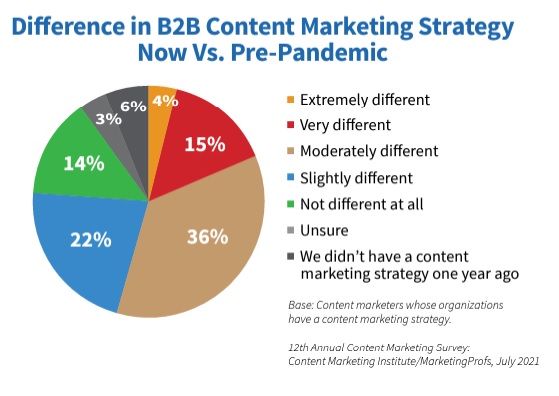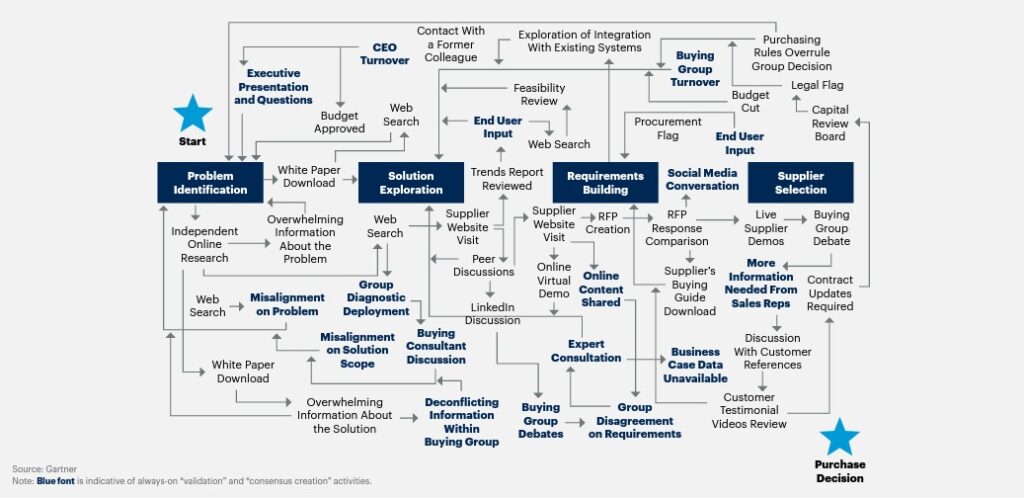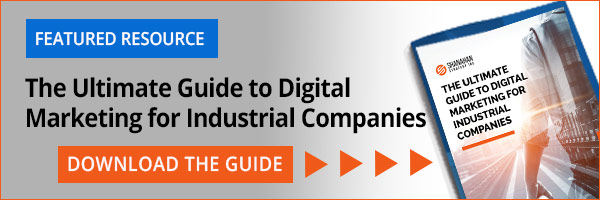As a manufacturer, your customers are almost always other businesses. With a B2B business model, the marketing strategy for manufacturers will look different than the strategy B2C businesses use.
Manufacturer marketing has seen a big change in recent years. The global pandemic led to a rapid increase in digital marketing use. If your business does not keep up with this marketing trend, you may lose out to the competition.
In this guide, we will explore 5 key steps manufacturers can take to ensure they have a successful marketing strategy.
Key Takeaways
- Manufacturers must change their mindset to see marketing as a revenue driver instead of an expense.
- Viewing the purchasing journey from the buyer’s perspective can help fine-tune a marketing strategy.
- Inbound content marketing, like blogs, case studies, guides, white papers, and press releases, is an important tool in attracting new customers to your site.
Step 1: See Your Marketing Strategy for Manufacturers as a Revenue Driver Instead of an Expense
Many manufacturing businesses are family-owned and have been working hard for generations to meet the needs of their customers. If this sounds like your business, you likely have thrived on word-of-mouth referrals and loyal customers.
While these methods still work, if you ignore the world of digital marketing, your business is going to fall behind. This is particularly true after the large shift in manufacturer marketing after 2020.
According to the B2B Content Marketing Benchmarks, Budgets, and Trends report for 2022, 55% of B2B businesses report that their content marketing strategy is at least moderately different in 2022, compared to what it was before the pandemic.

This dramatic shift may help you and other manufacturers see marketing more as the revenue driver it is instead of simply a necessary expense.
If your previous marketing strategy included designing pamphlets for meetings, updating your website, and attending trade shows, it is time for a new, modern strategy that can help accelerate your growth. A new strategy will also help you recognize that much of the power in a B2B relationship has shifted from the seller to the buyer.
With near-instant access to whatever information they need, customers do not have to rely on in-person sales calls to find out about your products. They want to know as much as they can about your business before they contact you for the first time.
Step 2: Understand the Buyer’s Journey
Your customers go through a complex journey before they make their final purchasing decisions. While they may not make direct contact with your business until later in the journey, you can still help them every step of the way with your digital marketing.

Your brand should present itself as a solution to your customers. Learn about their pain points and address those directly in your marketing. A strong value proposition tells your customers why they should choose your company instead of the competition.
A potential customer is going to visit your website multiple times, explore the content you produce, watch online demos, and download a buyer’s guide. The more information you make available online, the easier it will be for your customers to understand your business and products.
Step 3: Create Buyer Personas
Before you can create effective marketing strategies, you need to understand who your customers are. While your customers will mainly be other businesses, there are certain people within a business that are primarily responsible for making purchasing decisions.
Creating buyer personas modeled after your typical customers can help you design more effective marketing campaigns. Most manufacturers will have three basic types of buyer personas. These include procurement managers, design engineers, and maintenance, repair, and operations (MRO) managers.
The buyer persona will be a detailed description of that target audience. While the persona is fictional, you will give this person a name, behavioral traits, demographic details, and even interests. You can even give them a stock photo or illustration for a face to help your marketing team feel more connected to the personas.
Your personas should also include their common pain points, buying patterns, and business goals.
Step 4: Use Inbound Content Marketing
Inbound marketing is the practice of creating content that attracts customers to your brand. This type of content is educational and should be something potential customers can explore at their own pace. Your content should cater to your unique buyer personas.
Some common types of inbound marketing include:
- Blogs
- Videos
- Case studies
- Guides
- Topic cluster pages
- White papers
- eBooks
- Social media
- Press releases
- Infographics
- Newsletters
- Research reports
- Podcasts
- Webinars
With lots of content like this, you can position yourself as a thought leader in your industry. Customers will look to your brand as an expert. With some of your more helpful content, such as original research or white papers, you can require customers to enter their contact information. This gives you a valuable lead in exchange for your content.
Step 5: Optimize Your Site for Searches
One struggle in the B2B manufacturing industry is that your client base is small. In addition, the more specialized your products are, the smaller your potential customer pool will be. Within that pool, there is a small minority of customers who are actively looking for a solution. You want to do whatever you can to capture those active buyers.
Most of these buyers are going to turn to the internet to start researching potential products. You need your brand to be at the top of their list. To do this, your website and online content needs to be optimized for search engines. This is called search engine optimization (SEO) and is one of the most important factors in digital marketing.
When someone searches for something, Google, and other search engines, scour the internet for relevant results. The sites that provide closely related, high-quality content come back at the top of the search results. Earning that coveted top spot takes time and a lot of continual effort.
One alternative to organically placing high on the search results is paid search. With this strategy, you will pay to have a link to your site displayed when someone searches for specific keywords. For example, if you manufacture industrial diesel generators in Missouri, you might bid on the phrase “industrial diesel generators in Missouri.” You only pay for the ad if someone clicks on it.
Find the Right Manufacturer Marketing Partner
You are an expert in manufacturing. Shanahan Strategy is an expert in marketing. We want to help your business grow with a bold marketing strategy designed specifically for your brand. We specialize in helping manufacturers reach the right clients and grow their custom base.
Want to see if Shanahan Strategy is the right fit for you? Contact us today to start a conversation.

